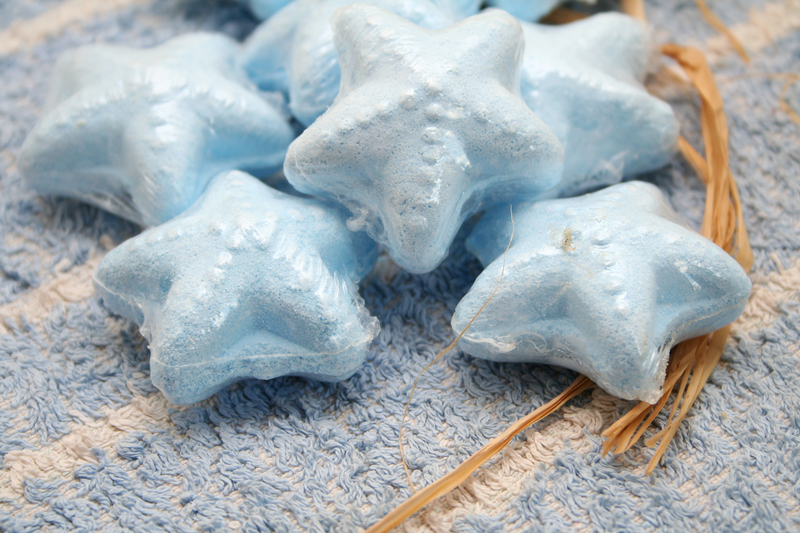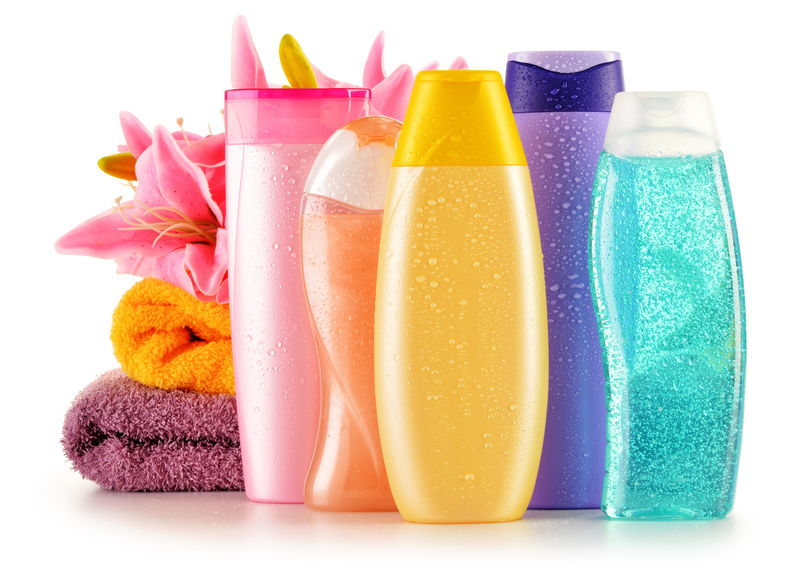Master the Art of Stovetop Cleaning: Banishing Burnt-on Residue
Posted on 14/08/2025
Master the Art of Stovetop Cleaning: Banishing Burnt-on Residue
Are you tired of seeing stubborn, burnt-on residue every time you gaze at your stovetop? You're not alone. Whether you cook daily or only occasionally, even the most cautious chef is no stranger to the challenge of keeping a stovetop pristine. Mastering stovetop cleaning is an essential part of home care, preserving the longevity of your appliance while making your kitchen shine. If you're ready to discover expert techniques to remove burnt-on residue and keep your cooking surface spotless, you're in the right place. Read on to find out how you can banish burnt-on residue and achieve effortless stovetop cleaning.

Why Is Stovetop Cleaning Important?
Stovetops endure spills, splatters, grease, and all manner of cooking mishaps. Leaving burnt-on residue not only detracts from your kitchen's beauty but can also:
- Harbor bacteria that could contaminate your food.
- Reduce the efficiency of your burners or elements.
- Contribute to bad odors and unpleasant cooking experiences.
- Shorten the life span of your appliance by causing technical issues over time.
- Create a fire hazard when accumulated grease is exposed to high heat.
Stovetop Surface Types and Their Cleaning Needs
Understanding your stovetop type is the first step in choosing the right cleaning techniques and tools:
- Gas stovetops: Feature removable grates and burners, which make cleaning under components possible but require careful attention to intricate parts.
- Electric coil stoves: Coils sometimes lift away, and the drip pans often collect burnt-on spills--these need regular soaking and scrubbing.
- Glass or ceramic stovetops: Popular for their sleek surfaces, but they're vulnerable to scratching and require gentle, non-abrasive care.
- Induction hobs: Smooth and easiest to clean, as spills don't burn on due to lack of direct heat, but they still require regular maintenance for shine and hygiene.
Preparing for the Ultimate Stovetop Clean
Before diving into removing burnt-on residue, make sure you're set up for success:
- Turn off the stove and let it cool completely.
- Gather your stovetop cleaning supplies:
- Baking soda
- White vinegar
- Dish soap
- Non-abrasive sponges or microfiber cloths
- Plastic scraper or old credit card
- Toothbrush for crevices
- Rubber gloves (optional but recommended)
- Remove all grates, burner caps, and coils (as applicable). Soak these in warm, sudsy water.
- Wipe away any loose crumbs or debris from the surface with a dry cloth.
Step-by-Step Guide: Banishing Burnt-on Stovetop Residue
Let's tackle difficult, burnt-on spills and stubborn grease using proven, kitchen-safe methods!
1. Soften Burnt-on Residue First
The golden rule: Soften stubborn residue before attacking it with scrubbing tools--this minimizes scratching and saves effort.
- Soak a clean towel in very hot, soapy water. Lay it over the affected area for 10-15 minutes.
- This loosens caked-on debris and breaks down sticky spills.
- If your stove surface can tolerate it, apply a paste of baking soda and water to the burnt areas before covering with the hot towel.
2. Gently Scrape Away Residue
Once softened, use a plastic scraper, silicone spatula, or old credit card to carefully lift away gunk. Avoid using metal tools, as they can damage the stovetop surface.
- Work slowly and patiently; don't force or dig aggressively.
- If residue persists, repeat the soaking step or try a baking soda and vinegar paste for extra dissolving power.
3. Attack Grease and Discoloration
Once the worst residue is removed, it's time to tackle remaining grease:
- Mix equal parts vinegar and water in a spray bottle. Spritz over stained sections and let fizz for a couple of minutes.
- Wipe clean with a microfiber cloth.
- Repeat as necessary for full shine.
4. Deep Clean Grates, Burners, and Knobs
While your stovetop air-dries, clean the removable components:
- Soak grates and burner caps in hot, soapy water for at least 20 minutes.
- Scrub with a brush, focusing on corners and under edges, rinsing well.
- For extra-stubborn stains, form a paste with baking soda and water, apply to the surface for 15 minutes, then rinse and dry thoroughly.
- Wipe knobs with a gentle, soapy rag or a solution of vinegar and water.
5. Buff to a Sparkling Finish
- Reassemble all components once dry.
- Give the entire surface one last buff with a clean, dry cloth to eliminate streaks and fingerprints.
Special Tips for Different Stovetop Materials
Glass and Ceramic Stovetops
These surfaces demand a gentle touch:
- Avoid abrasive scrubbers or steel wool, which may scratch the finish.
- Commercial glass stovetop cleaners can be effective for heavy-duty stains but always check manufacturer recommendations first.
- For tough marks: Use a specially designed razor blade, held at a 45-degree angle, and gently scrape residue. Only do this on completely cooled, glass stovetops.
Gas and Electric Coil Stovetops
- Regular deep cleaning (every 1-2 weeks) prevents build-up and makes cleaning easier.
- Ensure burners are completely dry and correctly placed before using the stove again--moisture can damage electric coils and affect gas ignition.
Induction Hobs
- Smooth, flat surfaces mean most spills are easy to wipe away, but always clean immediately to prevent reactivation and discoloration.
- Use a damp microfiber cloth for daily upkeep and avoid abrasive products to maintain the high-shine finish.
Eco-Friendly and DIY Stovetop Cleaners
Many powerful stovetop cleaning methods use items you likely have in your pantry. Not only do these options reduce the use of harsh chemicals in your home, but they're also affordable and gentle on your appliances. Consider these simple homemade stovetop cleaning solutions:
- Baking Soda Paste: Mix with water for a gentle, abrasive cleaner that lifts grime.
- Vinegar Spray: Fights grease and deodorizes naturally.
- Lemon Juice: Cuts through fatty residues and leaves a fresh, clean scent.
- Hydrogen Peroxide and Baking Soda Mixture: For older, set-in stains--apply, let sit, scrub, and wipe down.
Pro tip: Always rinse and wipe surfaces thoroughly after using any cleaning solution, especially natural acids like vinegar or lemon, to prevent potential surface etching over time.
How Often Should I Clean My Stovetop?
For optimal appearance and safety:
- Quick clean: After every use, wipe up fresh spills with a damp cloth to prevent them from setting.
- Weekly maintenance: Once a week (or at least every 2-3 uses for frequent cooks), perform a thorough cleaning as detailed above.
- Monthly deep clean: Soak removable parts and check for hidden grime under knobs and burner bases.
Consistency is key: The more often you tackle messes, the easier your stovetop cleaning routine becomes.
Preventing Burnt-On Residue: Smart Cooking Habits
Prevention is always easier than cure. To minimize future burnt-on disasters:
- Wipe spills as soon as possible.
- Use lid covers and splatter guards during boiling or frying.
- Don't overfill pots, and use the correct size burner for your cookware.
- Inspect burners and drip pans regularly for crumbs or food that could burn while cooking.
- Maintain proper ventilation to reduce greasy build-up on surfaces near your stovetop.

Frequently Asked Questions About Stovetop Cleaning
Can I use oven cleaner on my glass or ceramic stovetop?
No! Oven cleaners are too harsh and abrasive for glass or ceramic surfaces and can cause permanent damage. Stick to approved stovetop cleaners or natural methods like those listed above.
Is it safe to clean burners and grates in the dishwasher?
Check your appliance manual first. Many cast iron or special-finish grates should only be cleaned by hand, as strong dishwasher detergents can corrode or discolor certain metals.
How do I remove melted plastic or sugar from my stovetop?
For glass surfaces, allow the surface to completely cool. Gently scrape off hardened residue with a razor blade. For other surfaces, soften with hot, soapy water and carefully wipe away, repeating as needed. Avoid harsh chemicals that might react with the melted material.
What should I do if stubborn stains won't budge?
Soak the area with a combination of baking soda and vinegar, leave for 30 minutes, and attempt to gently scrape once more. Persistent marks may require several applications. For glass or ceramic stoves, a specialty cleaning cream and a razor can help, but always defer to your manufacturer's advice first.
Conclusion: Enjoy a Spotless, Gleaming Stovetop
Mastering the art of stovetop cleaning is about adopting the right habits, using the best tools, and being gentle with your appliance. By following the techniques and tips above, even the toughest, burnt-on residue can be banished with minimal effort--leaving you free to create culinary masterpieces in a clean, safe, and inviting kitchen. Remember: consistency, patience, and the right approach are your most powerful cleaning allies.
Now that you've learned the secrets to stovetop cleaning, nothing will stand between you and a sparkling, like-new cooking surface!
- Stay proactive with spills
- Choose natural or specialty solutions as needed
- Protect your investment through regular deep cleans
Banishing burnt-on residue is no longer a dreaded chore--but a simple step toward keeping your kitchen a source of pride and pleasure.




